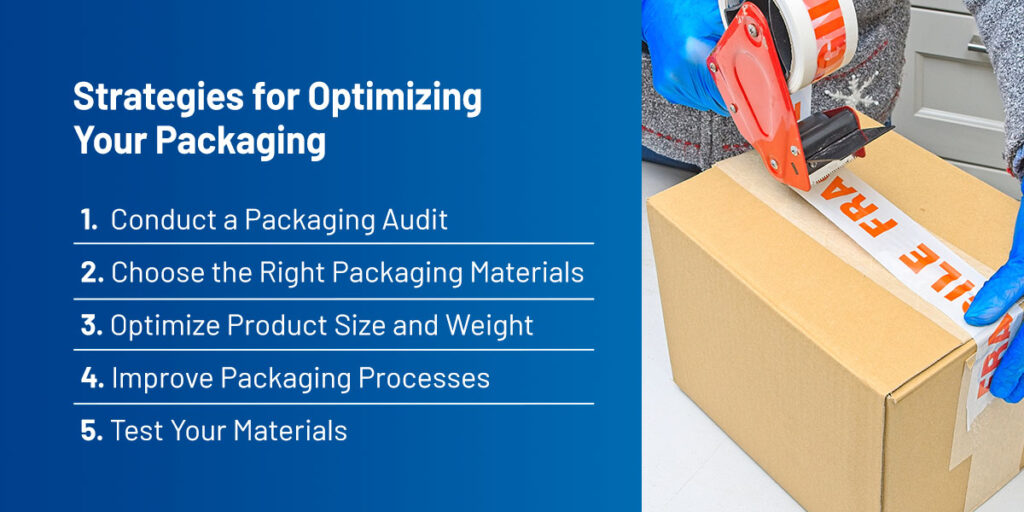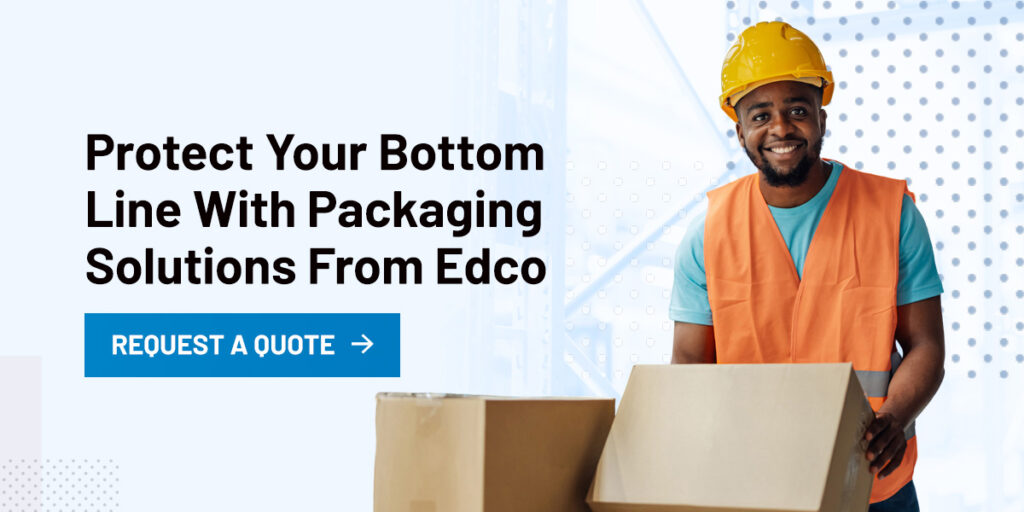Packaging is easy to overlook. It comes after all the production design, testing, marketing and assembly. When budgets are tight, many businesses wrap their product up in whatever’s cheapest and easiest. But if you’re in an industry that depends on reliability — like industrial manufacturing and electronics — the wrong packing decision can lead to expensive problems. Avoid damage, customer complaints and increasing expenses with efficient packaging solutions.
The Tangible Costs: Direct Financial Losses
In 2024, returned items totaled $890 billion, or 17% of all sales, an increase from 15% in the previous year. While not all of those are damaged products, every returned item eats up your bottom line.
Poor packaging costs more than a few unhappy customers. It can directly lead to financial losses. From higher damage rates to increasing costs, here’s how insufficient containers may be impacting your business:
Product Damage and Returns
Effective packaging stops bumpy transportation from harming products. When companies cut shipping corners, it leads to damaged goods. These products must be replaced, reshipped and inspected. That means longer delivery timelines, unhappy customers and backup orders. Customers in industries with tight compliance standards cannot accept these items — they have to return products damaged during shipping. The more problem products you ship out, the more you impact customer confidence in your brand.
Increased Shipping Costs
Shipping carriers generally use dimensional weight pricing. Containers that are too large or inefficiently filled can increase freight charges. Even lightweight products can be expensive with oversized containers. If the packing materials are poor, you could even see damage surcharges for shipping problems.
Beyond initial shipping, any broken goods need to be returned. That additional shipping traffic will cost you as you cover returns or send out new products for free. Extra packaging for these reshipped products further reduces profits.
Labor Costs
Packaging problems will also add hidden costs to every order. Slow, inefficient packing becomes excessive handling and higher labor costs. Disposing of damaged goods and replacing new products to reship also extends labor costs. Shipping solutions should be easy to handle, fast and consistent to streamline labor.
The Intangible Costs: Hidden Impacts on Your Brand
Product defects during shipping are the most visible issue, but what about the hidden costs? Using improper products for packaging cost reduction does more than harm goods — it affects your reputation, customer trust and bottom line. Other costs associated with improper wrapping include:
- Brand reputation damage: Poor product condition on arrival reflects your brand’s standards. Damaged goods make a company look careless. In the age of social media, packaging and brand reputation can go hand in hand, affecting the bottom line.
- Loss of customer trust: Reliable, consistent wrapping translates to professionalism. Broken or sloppy containers make customers question your reliability. In critical sectors like aerospace, errors can translate to lost contracts if customers think you’re not investing in quality.
- Increased customer service costs: Problem packages become customer calls and refunds. Your team sees higher return requests, call volumes and administrative workloads. Over time, this adds up in costs, time and labor.
Strategies for Optimizing Your Packaging
Better wrapping can improve profit margins and the customer experience. Treat transport materials as a critical part of product performance. If they are more than a baseline expense, you’ll see better efficiency and returns.

1. Conduct a Packaging Audit
An in-depth audit tells you exactly where your product problems occur. Reviews assess:
- Damage rates
- Return volumes
- Freight charges
- Labor requirements
- Customer service tickets
- Customer complaints
Use product data and customer feedback to pinpoint packaging with the most frequent issues. Is there harm occurring with specific carriers, products or packaging types? Finding out where products fall short shows your business’s weak points so you can address them based on your unique needs.
2. Choose the Right Packaging Materials
You need to tailor wrapping to the product and its transport conditions. Moisture- and corrosion-sensitive items need barrier materials like moisture barrier bags and volatile corrosion inhibitor (VCI) paper to keep water out. Static-sensitive electronics should have static shielding bags that meet ESD protection standards.
Businesses can also use foam inserts, bubble wrap and void fill to prevent movement. Choose materials for their durability, cost-efficiency and compliance. If you focus on sustainability, prioritize biodegradable, recyclable solutions to meet your environmental goals without sacrificing protection.
3. Optimize Product Size and Weight
Dimensional weight pricing means shipping carrier charges based on package weight and size. The more oversized or inefficient the packaging, the higher the freight cost. Custom wrapping gives products a snug fit, reducing void space and total package volume. Use lightweight, protective materials to cut costs without sacrificing shipping damage prevention.
4. Improve Packaging Processes
More efficient packing processes reduce labor costs and handling errors. Explore automation for tasks with label applicators and bag sealers. This equipment improves speed and consistency for the line. If you’re packing manually, invest in employee training. Teams that can effectively fold moisture barrier bags and wrap without overpacking will be faster and better at getting packages out the door without issues.
5. Test Your Materials
Test all packaging with standardized procedures. Real-world condition tests, such as dropping, compression and vibration simulations, show weak points in packing. If you’ve tested all packaged products, your team knows everything going out the door can handle impact, abrasion and moisture penetration.
You may also want to consider the unboxing experience. Easy-to-open, attractive containers improve the consumer experience and make it easier for procurement officers to inspect. Your brand looks more professional, boosting your reputation.
Investing in Quality Packaging: A Long-Term Strategy
Choosing high-quality packaging designs for shipping isn’t a short-term fix. It’s a long-term strategy that protects your products, customers and profits. While effective wrapping might cost more upfront, you’ll save more on reduced product damage, customer complaints and labor costs. Over time, you’ll seal stronger customer relationships and extensive savings.
Make sure you’re partnering with a reliable supplier for packaging solutions. An experienced packing source will understand your industry’s unique needs and offer custom solutions for your products and transport environment. The more critical your industry is, the greater the demand for protective goods. When safety and your business success are on the line, there’s no room for poor performance.

Protect Your Bottom Line With Packaging Solutions From Edco
When it comes to specialized packaging, cutting corners never pays off. At Edco Supply Corporation, we help military contractors, electronics manufacturers, and industrial businesses with products and desiccants. We have fast and reliable solutions, whether you need standard sizes or a custom run.
With over 60 years of experience, you can count on Edco to provide compliant, field-tested materials. Our team will guide you through every step, ensuring your shipments meet high standards and arrive intact. Contact us today to discuss your packing needs or request a quote online. Let the world’s leading supplier of military specification packaging help protect your products and bottom line.



